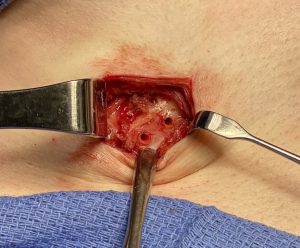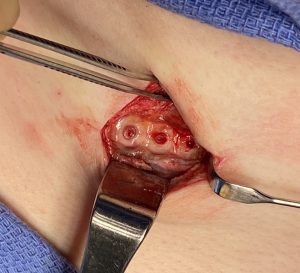Shoulder narrowing surgery is an effective procedure based on a removal of a segment of the clavicle. As the clavicle is reduced in length the outer shoulder width moves inward in a near linear relationship of the bone that is removed. While shoulder width reduction is the objective of the procedure, its success is also measured by an eventual complete healing of the bone segments so that normal range of motion of the shoulder is fully recovered.

Once the clavicle bone has gone on to fully heal and all normal activities have been resumed, the only risk moving forward is whether the indwelling hardware will need to be removed. Clavicle hardware removal would only need to be done for three reasons. First, given the thin skin cover the superior plate may have a visible profile. Second, the superior plate may be a source of irritation from bra straps or shoulder bags. Third, some patients may simply prefer not to have a foreign material in their body when its purpose has been achieved. But regardless of the reason hardware removal gives one an ideal time to assess the healing of the osteotomy site as well as the thickness of the bone around it.

While the plate removal will result in an immediate profile height elimination, one may still be able to feel some irregularities on the bone due to the bony overgrowth along the sides and inner aspect of the plate. This will eventually smooth over in time. The screw holes will also completely full in with bone.
The clavicle is a robust healing bone that will fully heal after length reduction osteotomies. This is well known in clavicle fractures which do not have the advantage of two clean cut bone edges against each other. Its thick cortices and large internal marrow space amount for its profound ability to rapidly heal. The observations seen in hardware removal support that the full thickness of the bone is restored and one can return to unrestricted physical activities afterward.
Dr. Barry Eppley
Indianapolis, Indiana




